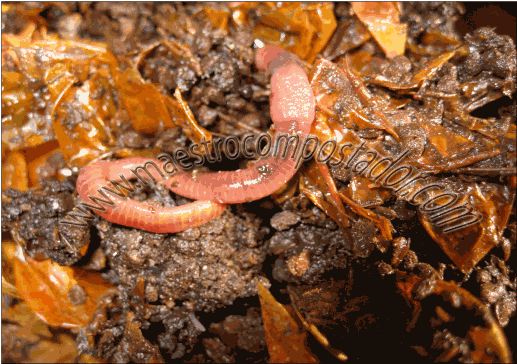Origins
The vermiestabilization or vermicomposting process is referred to the organic matter digestion and management by the earthworms. In the antique Egypt the earthworms were already considered as sacred animals and who damaged an earthworm was severely castigated, because it was well known their importance over the soil fertility. Similarly, Greeks and Romans were conscious about the relation between the earthworms and the fertile soils. But Charles Darwin was who explain the function of those organisms publishing in 1881 the book The vegetal land formation through the action of worms. Since then the worm culture was developed as a method to obtain substrates with high fertilizer power.
This process has been developed since years as rudimental form in Philippines, China and other Asiatic southeast countries, as well as Central and South America countries. Since years those techniques are realized in Europe (Great Britain, Holland and Italy), with the innovation of the use of the final product as fertilizer and substrate in horticulture. The first approximation of the possibility to use the worms for organic matter transformation was made by Watanabe and Tsukamoto in 1976, and the first time that the urban depurator lodes were used was in 1977 in the University of New York.
A definition
Vermicomposting could be defined as an organic matter bioxidation and stabilization method, mediated by the combined action of earthworms and microorganisms, obtaining a thin grain, homogeneous and stabilized final product denominated vermicompost. As in all biological treatments related with biowastes management, they are process that happen in a natural way in Nature and that close the organic matter cycle. For this reason, if we want understand and apply those processes we need to know the implicated organisms, their characteristics and necessities.

Its advantages come from the direct use of the earthworms behavior, like its detritus feeding and its movement by galleries; and from an indirect use, stimulating the microbial activity, favoured by the mechanical transformation of the waste when it goes trough the worm digestive system, producing a crumbling and reduction of the particles size. It supposes a higher surface of the organic particles, facilitating its degradation by the microorganisms. The combined action of worms and microorganisms intensify the organic matter decomposition. It is important to consider that the worms obtain their food from the high number of microorganisms that exist in the soil or in the organic matter in decomposition, because they could not assimilate the high part of not cellular organic nutrients. During the vermicomposting, apart than the microorganisms, the worms feed with partial or totally degraded components from the organic wastes, transforming the organic matter into an aerobic humus that can be used in horticulture. Apart of these micro organisms, in numerous occasions, the worm and microorganism’s actions can work together with other soil micro fauna as mites, enchytraeids, collembolans,...


